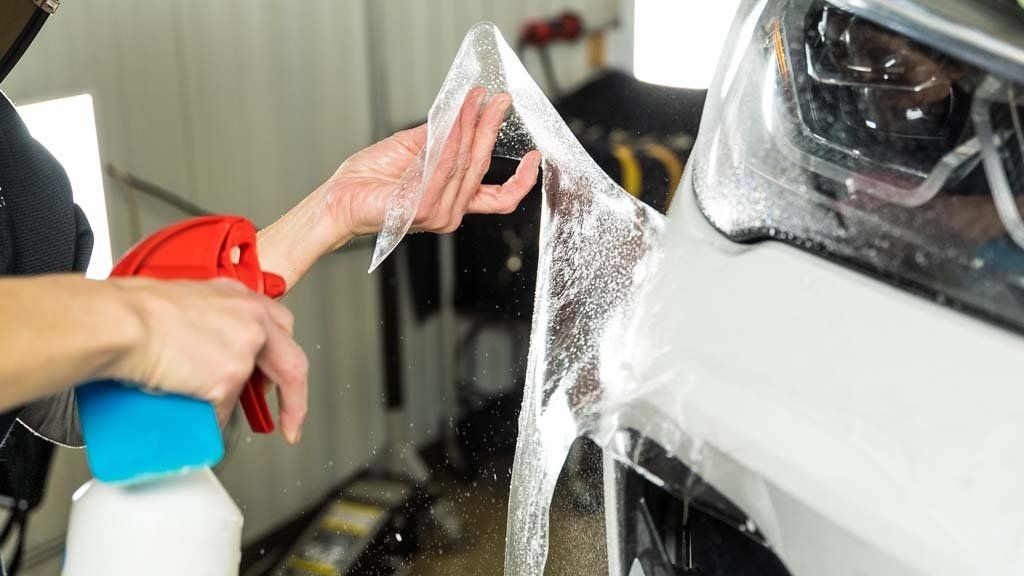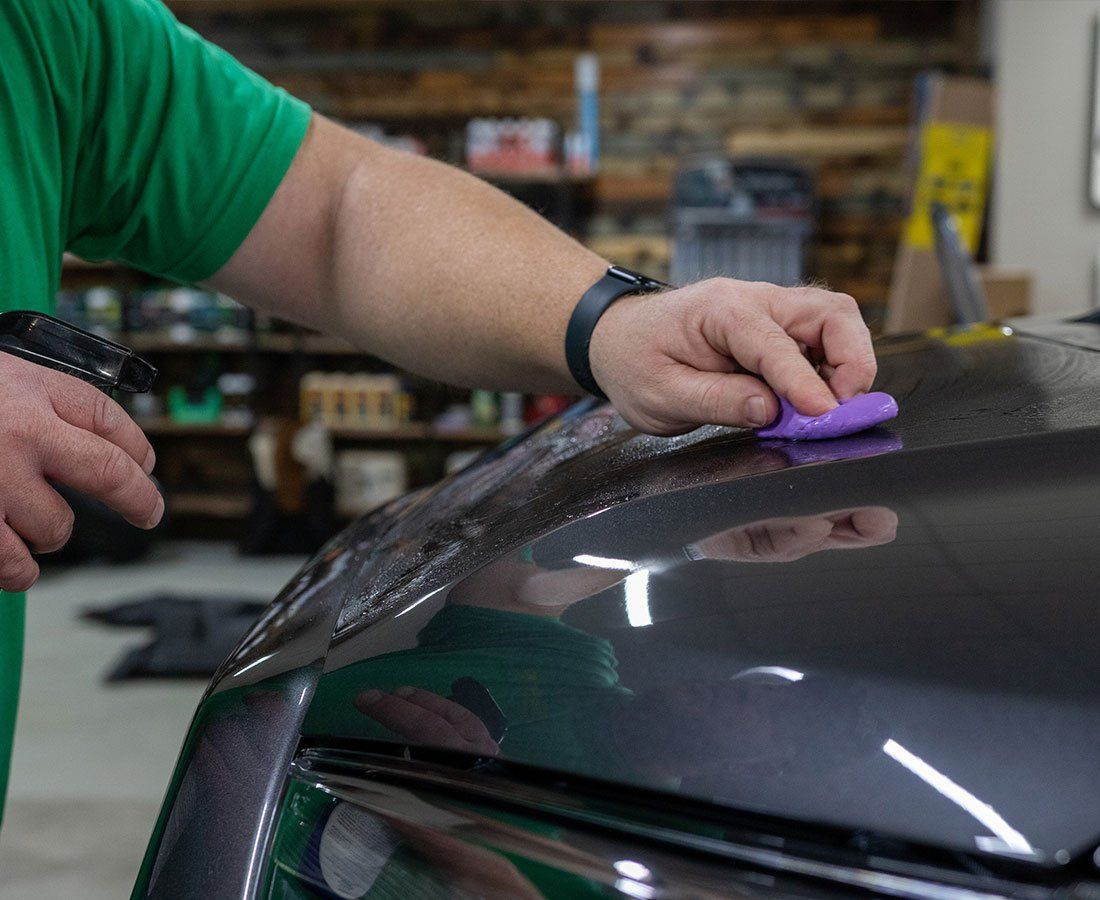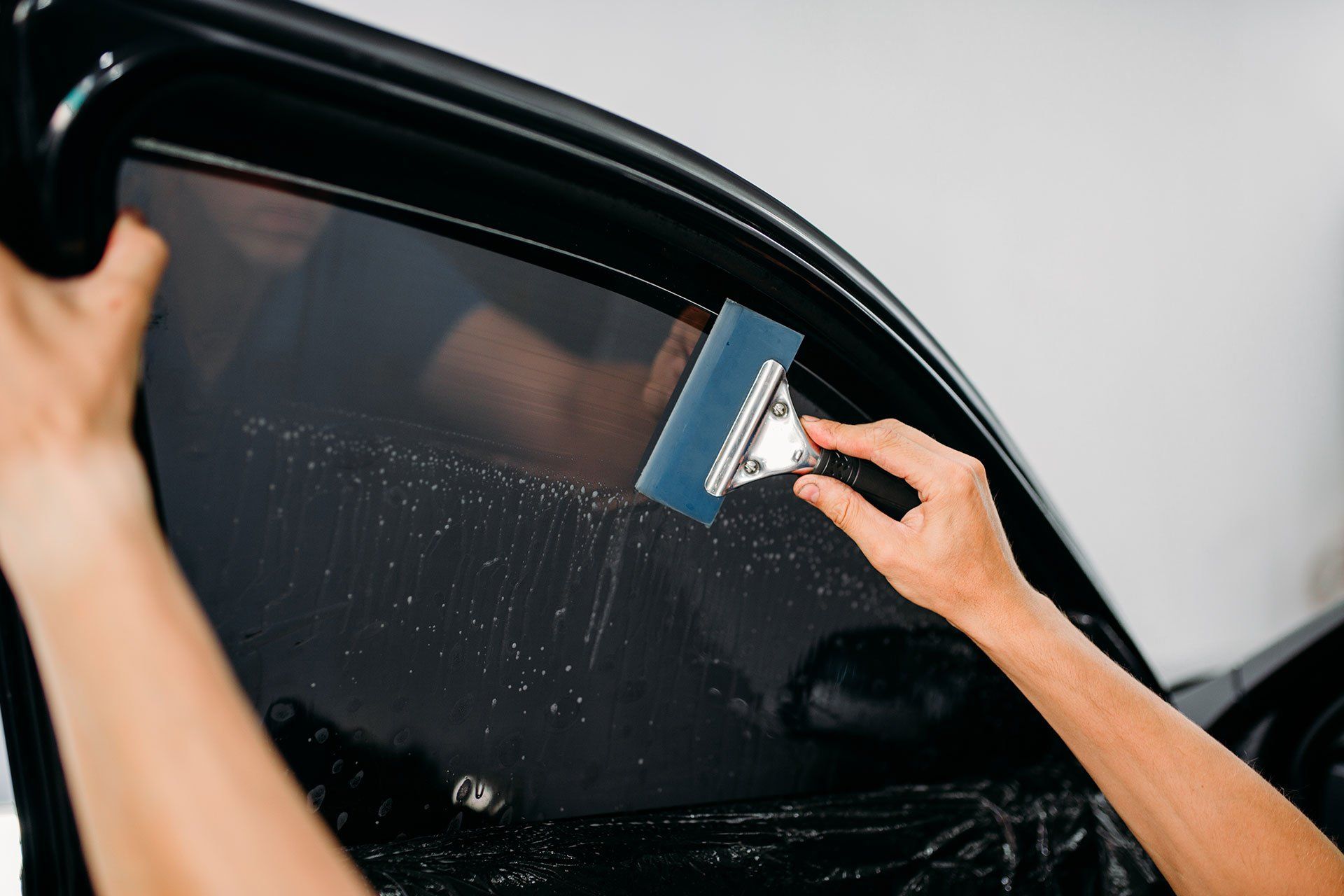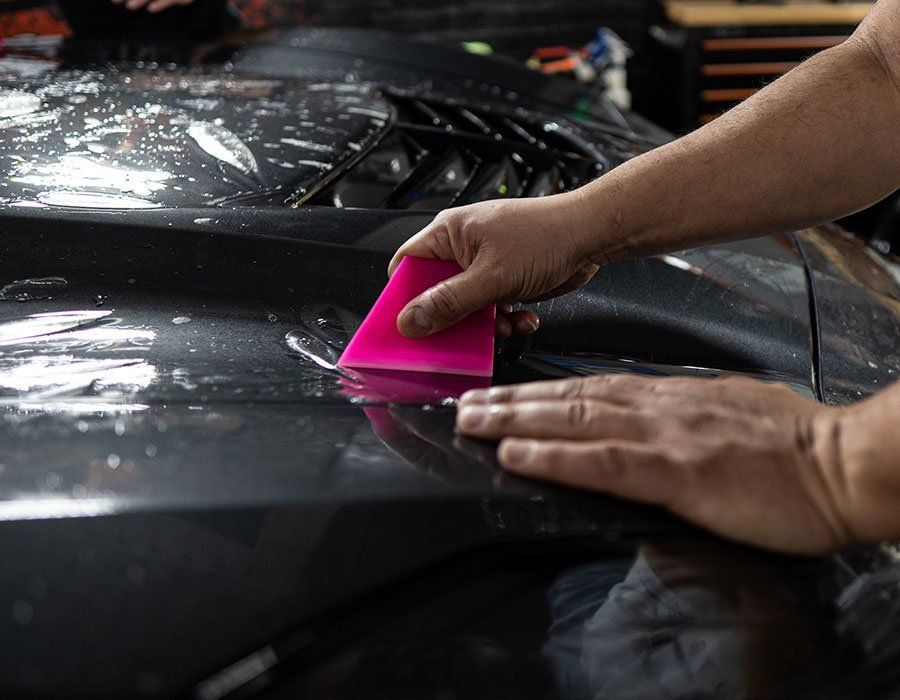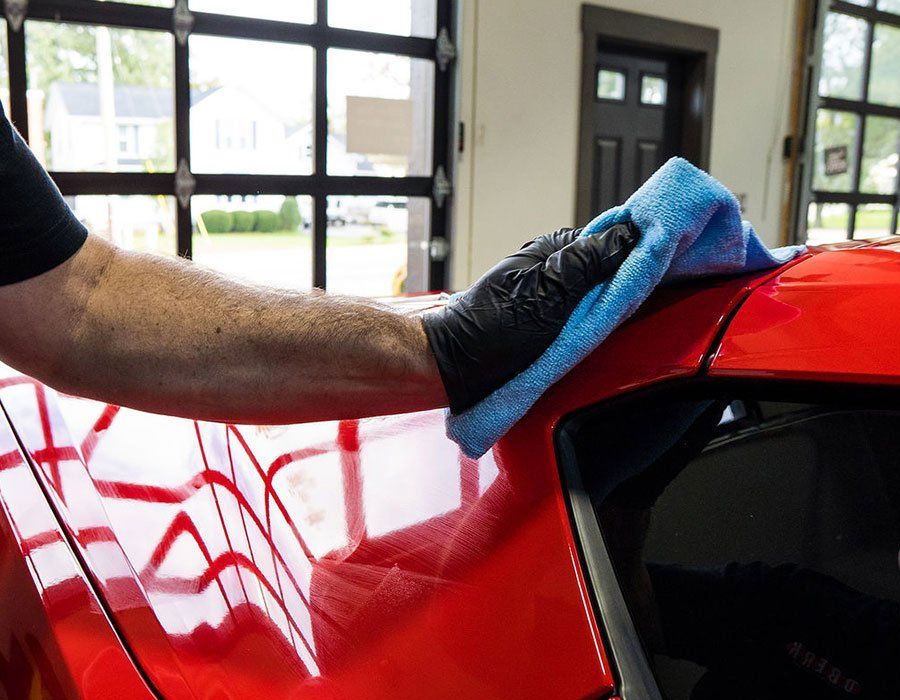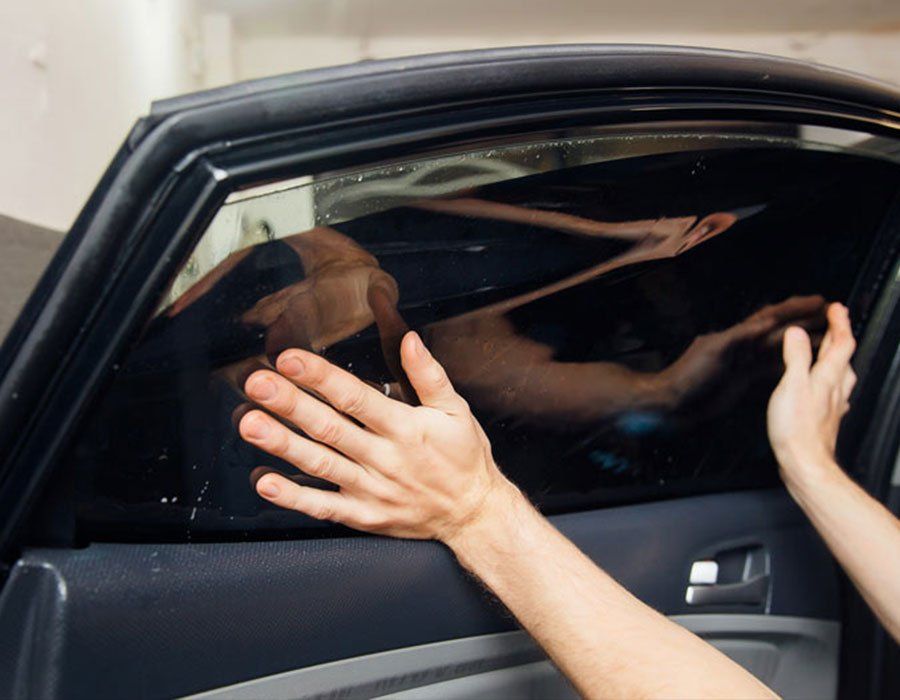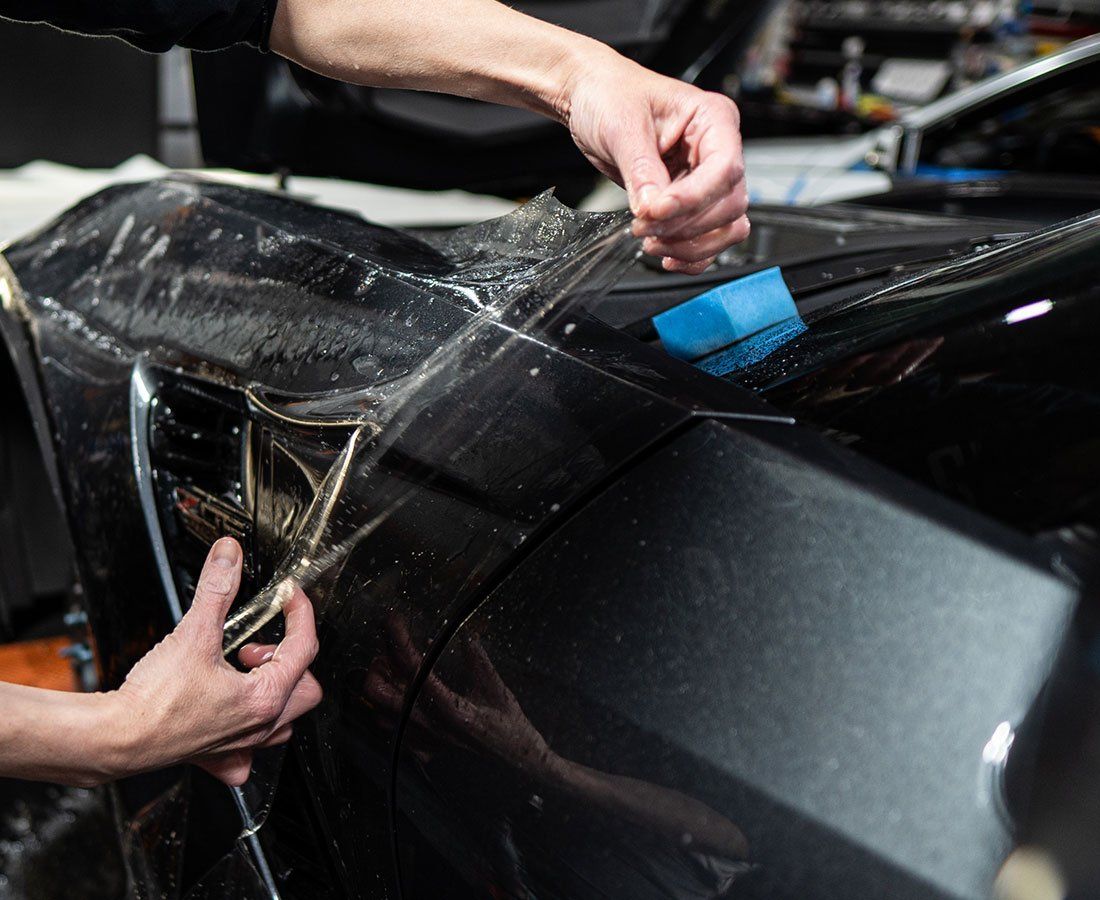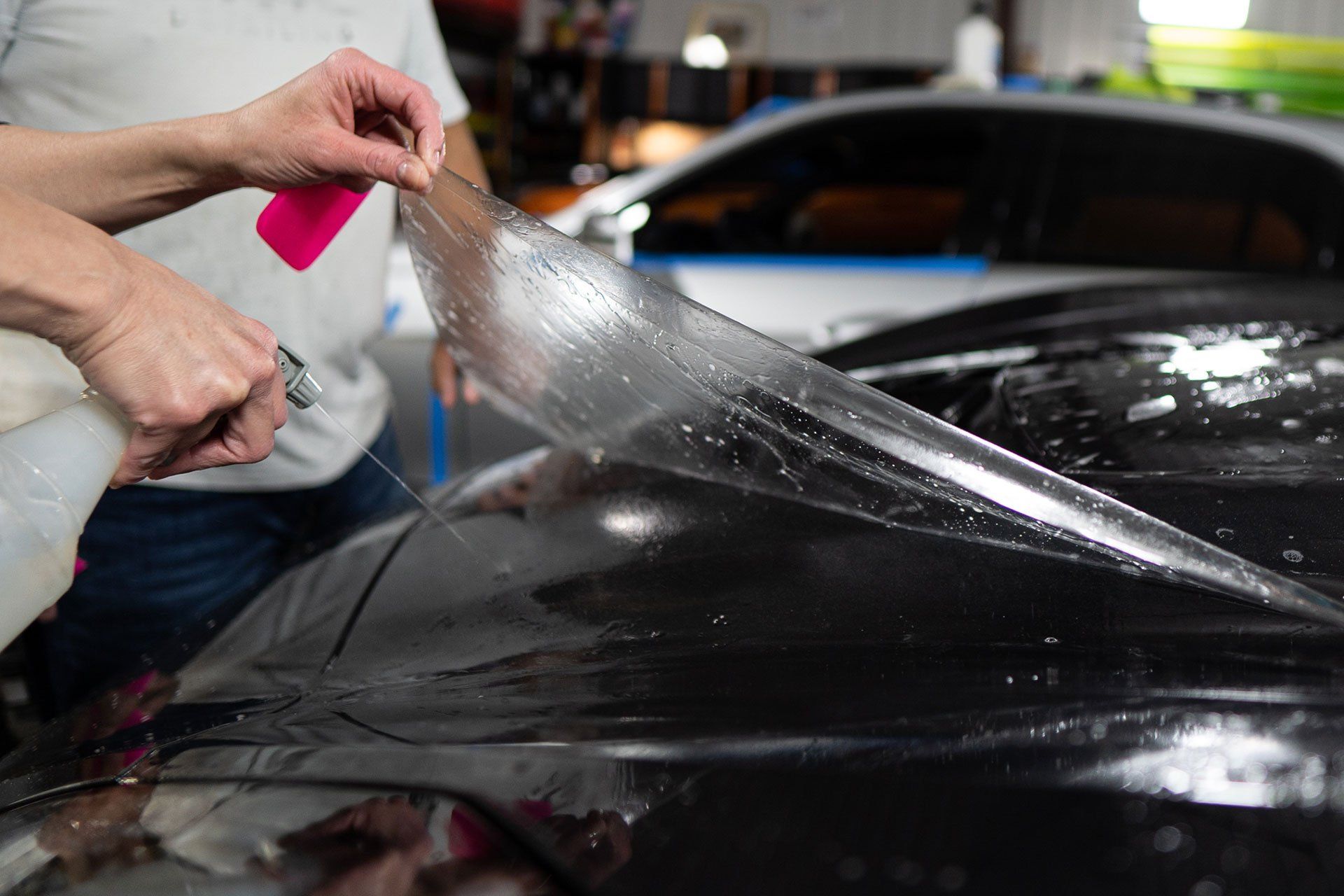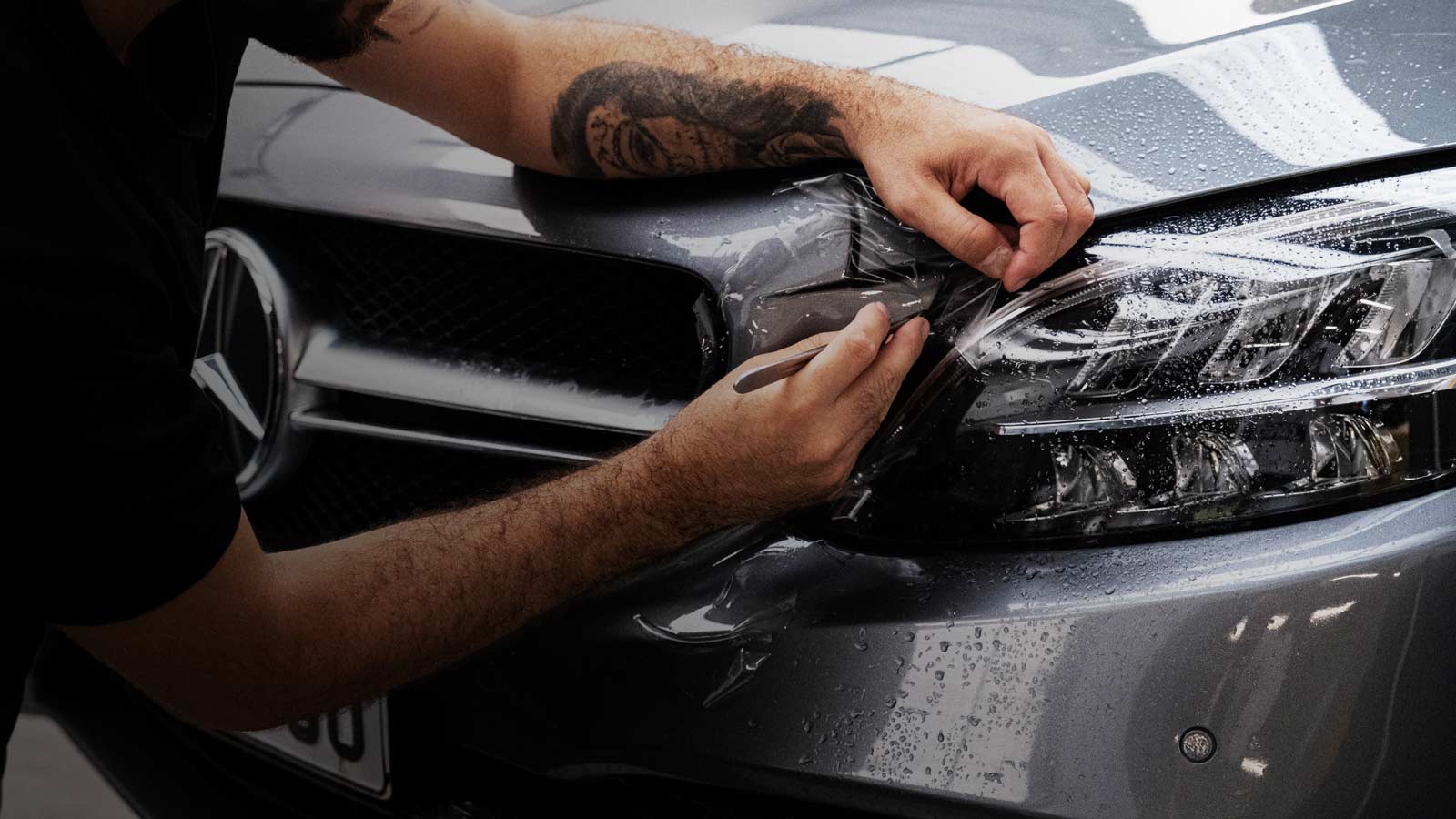Paint protection film (PPF) is like a superhero cape for cars. It secures them from chips and scrapes more effectively than other methods, such as waxing. It's not just about toughness; PPF also makes your car look slicker by preserving the paint's vibrancy, thereby augmenting its resale value significantly. But the real catch? A paint protection film acts like a safety net, protecting the original paintwork even from invisible threats such as UV rays, acid rain, or bird droppings.
A paint protection film or clear bra acts as a transparent shield, offering superior protection against road debris such as stones, gravel, and sand that can otherwise cause visible chips or scratches on unprotected surfaces. It absorbs the force of small impacts, reducing the risk of chipping or scratching the vehicle's paint. This safeguarding feature helps maintain the car's exterior aesthetics and long-term resale value.
The Benefits of Using PPF for Vehicle Protection
Paint protection film is akin to a superhero cape for your car. It's not just about preventing chips from road debris; it provides an all-encompassing protection system that maintains your car's fresh appearance day after day.
- Superior Protection: A PPF acts as a barrier against swirl marks, small chips due to road debris, and other minor impacts that could mar the car's exterior. It absorbs the force of small impacts, reducing the risk of chipping or scratching the vehicle's paint. This means when you're driving on a gravel-strewn back road or taking a scenic tour along the coast, your car is shielded from unsightly damage.
- Maintains Aesthetics & Resale Value: Perhaps one of its greatest appeals is that PPF safeguards the original paintwork, protecting it from environmental stressors like UV rays, acid rain, road salt, or bird droppings. By doing so, it retains the vibrancy of the paint. This isn't just about keeping your car looking great today; it's an investment in maintaining its long-term value.
- Maintenance Cost Savings: Let's face it, repairing paint damage can be quite expensive. On average, fixing scratches and chips caused by road debris can range anywhere from $500 to $2,000. With a clear bra installed, you can expect a significant reduction in these costs. That's not just a dent in your wallet prevented; it's also peace of mind knowing your car will stay pristine through all those miles on the road.
Now, when it comes to preserving something as precious as your car’s aesthetics and long-term value, proper maintenance and care with paint protection film are key considerations. You wouldn't let your computer remain unprotected from damaging malware and viruses when you could easily install robust security software. Similarly, considering the array of hazards on the road, safeguarding your vehicle with PPF seems justified in every instance.
PPF: Shielding Your Car from Road Debris
Imagine yourself driving down the road with the sun shining and the wind in your hair when suddenly, the car in front of you kicks up a small stone that pings off your hood. It happens so fast, but it can leave a lasting impact. Small chips, scratches, or dings caused by road debris like stones, gravel, or sand can mar your car's flawless exterior. This is where paint protection film swoops in to save the day. PPF doesn't just stand idly by; it acts as a sturdy barrier, absorbing the force of these small impacts and reducing the risk of chipping or scratching the vehicle's paint. So, that errant stone that would have otherwise left a mark on your beloved car? It hits the PPF instead and bounces right off, leaving your car unscathed.
Battle Against Swirl Marks
Let’s talk about swirl marks. The majority of the time, improper washing and drying methods or contact with grit during cleaning are the causes of these hairline scratches. Road debris is one of the leading culprits behind swirl marks—the very same troublemakers that paint protection film shields your car from. Here’s how it works: Imagine that you've just given your car a thorough wash and parked it in your driveway. A gust of wind blows up and carries a spray of dust and dirt onto your freshly washed car. That layer of grime might seem harmless, but every time you touch or clean your car, those tiny particles can leave behind such fine scratches that they're difficult to notice at first glance. Over time, these scratches aggregate into what we commonly refer to as swirl marks, taking away from the glossy finish of your car's paintwork.
Protection from Minor Impacts
Now let's consider minor impacts. You're on the highway when an unexpected hailstorm hits. The tiny pellets hurtling down at high speeds can be tough on your car’s exterior, potentially causing damage in the form of small dents or divots. This isn't just limited to hail; various road hazards pose similar risks to your car's finish. Paint protection film steps in as an invisible shield, deflecting these minor impacts and preserving your car's flawless exterior finish. The protective layer of PPF has rendered what would have required expensive paint repairs into nothing more than an inconvenience.
The visual clarity of PPF ensures that protection doesn't come at the cost of aesthetics—your vehicle remains sleek and polished while being shielded from these everyday hazards. So next time you see a stone hurtling toward your car while driving, picture that stone bouncing off harmlessly, thanks to your trusty paint protection film shield—keeping your automobile looking impeccable mile after mile.
DIY vs Professional: Paint Protection Film Installation
Deciding whether to tackle paint protection film installation as a DIY project or entrust it to professional hands is a crucial step in safeguarding your vehicle. Before embarking on this journey, consider several key factors that influence the choice between DIY and professional installation.
- Cost Considerations: DIY installation kits are often more budget-friendly compared to the services of a professional installer. However, opting for an experienced professional, like Auto Film Guys in Tampa, ensures precision and expertise, critical to achieving optimal results. Additionally, professionals typically use high-quality materials and have access to specialized tools, yielding long-lasting protection for your vehicle.
- Expertise and Precision: Installing a paint protection film requires a meticulous process and precise alignment to ensure proper coverage and protection against road debris. Professionals undergo training and have honed their skills through experience, offering an advanced level of expertise in handling and applying the film. Their knowledge enables them to navigate around challenging areas and contours of the vehicle, ensuring a seamless finish. From the comparison, while DIY installation may be more economical initially, professional installation offers superior expertise and long-term durability.
- Thorough Preparation: Before applying a paint protection film to your vehicle, thorough preparation is essential for both DIY and professional installations. This includes cleaning the vehicle surface extensively to ensure proper adhesion and prevent imperfections underneath the film. A professional inspection of the vehicle is crucial in identifying pre-existing damage or imperfections that require attention before installation.
Ultimately, when considering PPF installation, assessing your personal skills, available resources, and expectations for a finished product is key to making an informed decision. It's important to weigh the options carefully, considering not only the cost but also the long-term benefits of professional expertise and precision.
Extending Protection: PPF Beyond Road Debris
It's fascinating how paint protection film serves as a shield against not only road debris but also other environmental stressors that can pose significant threats to your vehicle’s exterior. Cars, just like us, face harsh elements every day. They endure the relentless onslaught of UV rays, acid rain, and bird droppings—seemingly harmless substances that can wreak havoc on your vehicle's paint if left unchecked. Think of PPF as a superhero cape for your car, defending it from the harmful effects of these environmental stressors. UV rays can cause fading and discoloration in your car's paint over time. Bird droppings contain acidic substances that can eat away at your car's clear coat if left unattended. Imagine this: You come back to your car after a relaxing day at the beach or park to find an unwelcome present from our feathered friends. A simple wipedown might not get rid of all the residue, and if ignored, these seemingly harmless droppings could leave behind stains and etchings in the paint. However, with a layer of paint protection film in place, you have an extra deterrent against these potential menaces.
But wait, there's more! The protective capabilities of PPF go beyond shielding your vehicle from common environmental offenders. It has long-term benefits that extend to the vehicle's aesthetics and value. When we invest in something substantial, like a vehicle, we want it to retain its allure for years to come. Here's where paint protection film comes into play—it acts as a barrier against these enemies of pristine exteriors, securing your vehicle's value over time by maintaining its aesthetics. Consider this: Your car is an investment—one that you'd like to see appreciate over time rather than depreciate due to avoidable wear and tear. By utilizing PPF as a proactive measure against environmental stressors, you're ensuring that you're not just maintaining its current value but also planting seeds for long-term appreciation.
Exceptional Paint Protection Film Service in Tampa, FL
Transform your vehicle into a fortress of protection with Auto Film Guys, your premier destination for exceptional paint protection film services in Tampa, FL. Our commitment to excellence and passion for preserving your car's pristine appearance shine through in every PPF installation. At Auto Film Guys, we understand the importance of shielding your investment from the harsh Florida elements, and our skilled technicians deliver precision and expertise to ensure flawless paint protection film application. Say goodbye to worries about road debris, rock chips, and environmental contaminants compromising your vehicle's finish. Trust Auto Film Guys to provide top-notch PPF services that not only defend but also enhance the aesthetic appeal of your cherished ride. Elevate your car care experience today. Schedule an appointment with Auto Film Guys or call us at (727) 940-2340 and experience the exceptional PPF service that sets us apart in Tampa!
The Auto Film Guys Blog
